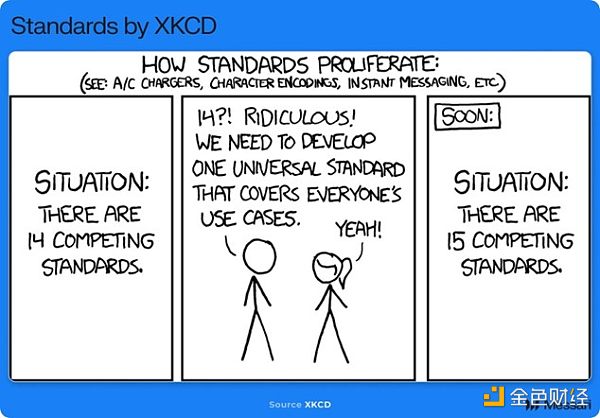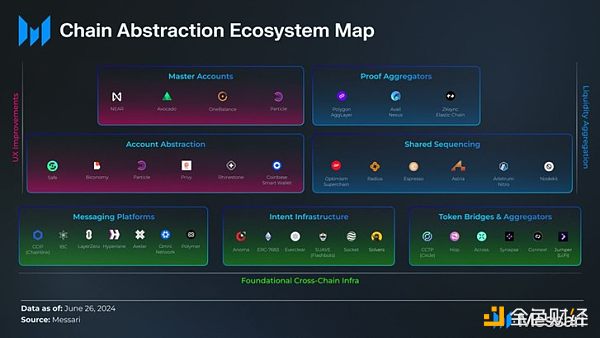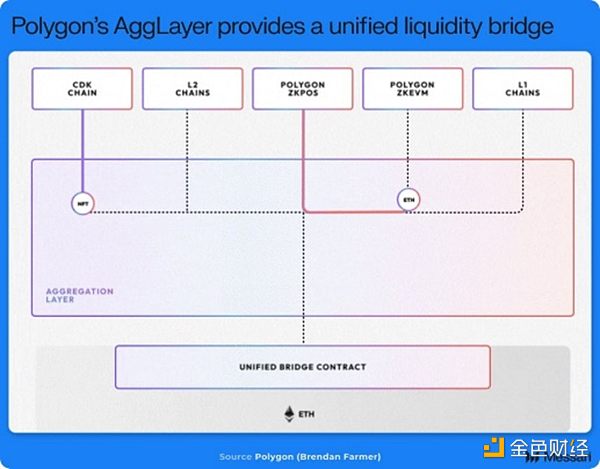Author: Kunal Goel, Messari Researcher; Translation: Jinse Finance xiaozou
Too many chains and too many rollups have brought two major problems to the crypto world: liquidity fragmentation and poor user experience.
1, Failed attempts

We have tried interoperability, cross-chain, multi-chain and other methods, but none of them have succeeded. What's worse, most practices have brought more fragmentation problems.
The answer to these problems is chain abstraction.

Chain abstraction is a holistic solution to the problem of cryptocurrency fragmentation.
2Why cross-chain and multi-chain failed, and chain abstraction may succeed
The most promising solutions note the mistakes of early solutions and create a trusted, neutral and unbiased infrastructure to reduce the possibility of further exacerbation of the fragmentation problem.
In addition, the difference of chain abstraction attempts is that they are recognized by Ethereum and its ecosystem. Ethereum's rollup-centric vision is fragmented by design, so its large community/developer group recognizes the importance of providing a solution.
3, Bilateral Strategy
The fragmentation of funds and users must be solved from both ends.

Bottom-up chain abstraction connects the liquidity between different blockchains. The most promising project in this field is Polygon's AggLayer, which uses ZK proofs to provide unified bridging and shared liquidity. It can not only solve the liquidity problem within Polygon, but also solve the liquidity problem between different L2s and even alt-L1s.

Top-down chain abstraction is committed to improving user experience. The most important solution is the master wallet that allows users to trade across different chains. Some important projects worth paying attention to are: OneBalance, NEAR Protocol, Particle Network, etc.
 Bernice
Bernice











